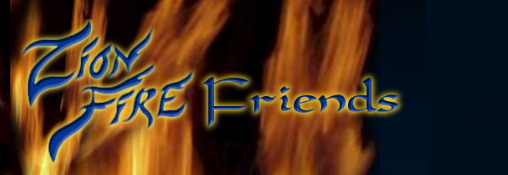Shofars in Christian Contexts
05-06-2007, 04:14 PM
What IS a shofar, anyhow??
I'm glad you asked! Your basic shofar is really and truly the horn of a ram. That's the kind of J-shaped horn, not the American mountain goat curly-q ram that many think of. That was expanded many, many years ago to be the horn of any kosher animal except that of a cow. They did not want to use a cow's horn because any possible conjuring up of images of golden ox type idols just did not seem prudent. They did not want to offend God!
Most shofars today are the horns of rams (he-sheep or he-goats). One of the major symbolisms within Judaism is the memory of YHWH Yireh (Jehovah Jirah, to you Ken Copeland fans). Abraham was obedient in taking his son Isaac up the mountain "to worship", meaning to offer sacrifice. They got to the top of the hill and Isaac, being a quick study and about 33 years old, says to his dad, "The wood I see. The fire I see, but where is the lamb for sacrifice?" Abraham said a most amazing thing. Only in the good ole King James English translation is this so dramatically put. In Genesis 22:8 Abraham answers Isaac by saying, "God will provide Himself a lamb..."
We know the story, but the little bitty details. God did indeed provide Himself as a lamb in Jesus, the Lamb of God. In Abraham's case, God did not provide a mere lamb, it says in Genesis 22:13 that a RAM was caught by his horns in the thicket. The word lamb means exactly what we know it to mean, a young, unweaned sheep or goat. There might be an age stipulation in today's world. Abraham expected that God was going to take Isaac, Abraham's lamb, as a burnt offering. Instead, God recognized that Isaac was in the prime of his life and provided instead a RAM in the prime of its life. Isaac was redeemed and given new life. Some see that as a foreshadowing of being born again. The ram's horn became a powerful symbol of God's redeeming power in the face of severe adversity. When the horn is blown, God's redeeming power is brought to the mind of those people who understand the symbol. Blow the horn with intention, remembering that God did indeed provide Himself a Lamb!
Some of the Jewish fathers also saw the shape of the basic shofar, that J-shape, as being symbolic of repentence, the first step to redemption. It's kind of like a bent knee or bowed head of Abraham, as he purposed to obey YHWH, even if it meant the sacrifice of his beloved son. Quite a picture, isn't it??
Blessed art Thou, O Lord our God, King of the Universe, Who has commanded the blowing of the shofar!
I'm glad you asked! Your basic shofar is really and truly the horn of a ram. That's the kind of J-shaped horn, not the American mountain goat curly-q ram that many think of. That was expanded many, many years ago to be the horn of any kosher animal except that of a cow. They did not want to use a cow's horn because any possible conjuring up of images of golden ox type idols just did not seem prudent. They did not want to offend God!
Most shofars today are the horns of rams (he-sheep or he-goats). One of the major symbolisms within Judaism is the memory of YHWH Yireh (Jehovah Jirah, to you Ken Copeland fans). Abraham was obedient in taking his son Isaac up the mountain "to worship", meaning to offer sacrifice. They got to the top of the hill and Isaac, being a quick study and about 33 years old, says to his dad, "The wood I see. The fire I see, but where is the lamb for sacrifice?" Abraham said a most amazing thing. Only in the good ole King James English translation is this so dramatically put. In Genesis 22:8 Abraham answers Isaac by saying, "God will provide Himself a lamb..."
We know the story, but the little bitty details. God did indeed provide Himself as a lamb in Jesus, the Lamb of God. In Abraham's case, God did not provide a mere lamb, it says in Genesis 22:13 that a RAM was caught by his horns in the thicket. The word lamb means exactly what we know it to mean, a young, unweaned sheep or goat. There might be an age stipulation in today's world. Abraham expected that God was going to take Isaac, Abraham's lamb, as a burnt offering. Instead, God recognized that Isaac was in the prime of his life and provided instead a RAM in the prime of its life. Isaac was redeemed and given new life. Some see that as a foreshadowing of being born again. The ram's horn became a powerful symbol of God's redeeming power in the face of severe adversity. When the horn is blown, God's redeeming power is brought to the mind of those people who understand the symbol. Blow the horn with intention, remembering that God did indeed provide Himself a Lamb!
Some of the Jewish fathers also saw the shape of the basic shofar, that J-shape, as being symbolic of repentence, the first step to redemption. It's kind of like a bent knee or bowed head of Abraham, as he purposed to obey YHWH, even if it meant the sacrifice of his beloved son. Quite a picture, isn't it??
Blessed art Thou, O Lord our God, King of the Universe, Who has commanded the blowing of the shofar!
Blessings!
Dean
DeanZF
« Next Oldest | Next Newest »
Messages In This Thread
Users browsing this thread: 1 Guest(s)
Powered By MyBB - Hosted by Tierra Hosting

